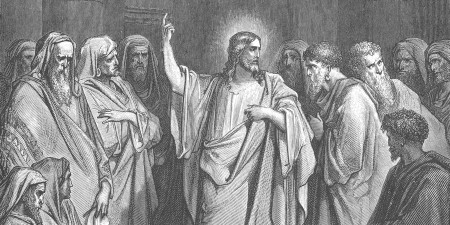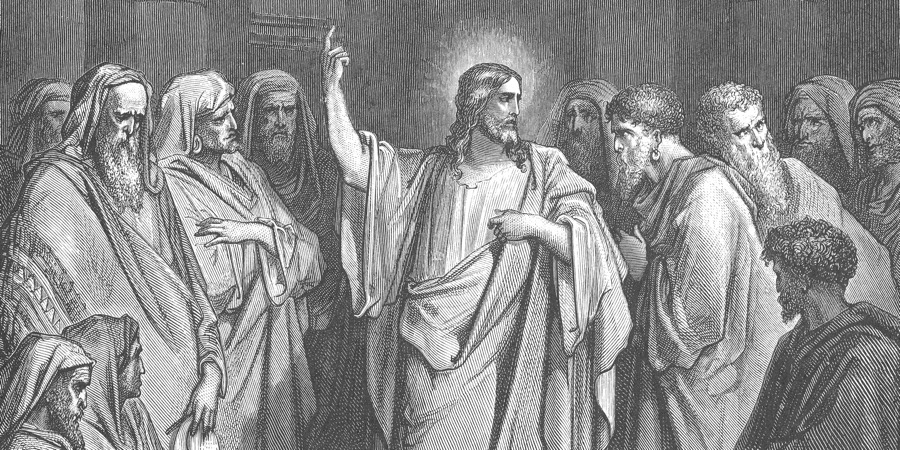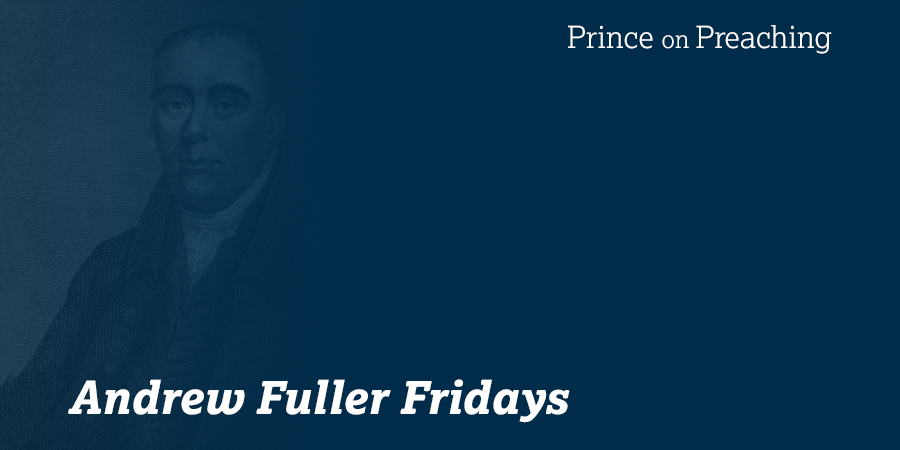
I will put enmity between you and the woman, and between your offspring and her offspring; he shall bruise your head, and you shall bruise his heel.
Genesis 3:15
And he said to them, “O foolish ones, and slow of heart to believe all that the prophets have spoken! Was it not necessary that the Christ should suffer these things and enter into his glory?” And beginning with Moses and all the Prophets, he interpreted to them in all the Scriptures the things concerning himself. … Then he said to them, “These are my words that I spoke to you while I was still with you, that everything written about me in the Law of Moses and the Prophets and the Psalms must be fulfilled.” Then he opened their minds to understand the Scriptures, and said to them, “Thus it is written, that the Christ should suffer and on the third day rise from the dead
Luke 24:25-27, 44-46
Genesis 3:15 and Luke 24:25-27; 44-46 stand on different sides of the cross of Jesus Christ, but both communicate a message of the glory of God in Christ through the redemption of his people—or, stated more simply, the message of the kingdom of God in Christ. Over one hundred and fifty years ago, Benjamin Keach described Genesis 3:15 as a text the theme of which runs through the entire Scripture and declares the glory of God in the triumph of the kingdom of Christ:
So the breaking of his head is to be performed by the Messiah, the God-man, and signifies the destruction of the power and kingdom of the devil, and Man’s redemption, from its tyranny and vassalage. Our Savior is figured here as a magnificent hero, who with his feet tramples upon the serpent or dragon and breaks his head. . . . By the seed of the serpent the whole power and troop of Devils and wicked men, who study the overthrow of Christ’s kingdom, is metaphorically represented . . . Christ will destroy the power of the Devil (Preaching from the Types and Metaphors of the Bible, Kregel, 1972, 60, 193).
In From Creation to Consummation, Gerard Van Groningen points the reader to the great cosmic struggle between the kingdom of Satan and the kingdom of Christ that is evident in Genesis 3:15:
And the protoevangelium
[first gospel] heralded the certain victory of the seed of woman and the assured continuity of Yahweh God’s cosmic kingdom within which the parasite kingdom of Satan would exist and be active. The protoevangelium also implied what was to be the major factor in the assured course of history-the tension, the battle, and outcome of that divinely determined history” (Creation to Consummation, Dordt Press, 1996, 131).In the Acts of the Apostles, Luke recorded that, in the forty days between Jesus’ resurrection and ascension, he appeared to his disciples teaching “about the kingdom of God” (Acts 1:3). George Eldon Ladd notes, “We are undoubtedly to understand this to mean that he was instructing them in the relationship between his proclamation of the Kingdom of God and his death and resurrection” (A Theology of the New Testament, Eerdmans, 1993, 368). Jesus’ conversation with the two discouraged disciples on the road to Emmaus was a lesson about his kingdom. He was also providing a Christocentric, kingdom-focused hermeneutical lesson when, a short time later, he appeared to the larger group of disciples and “opened their minds to understand the Scriptures” (Luke 24:45).
The resurrected Christ was providing his disciples with an exposition of the first gospel promise in Genesis 3:15, of all its glorious unfolding in the Scripture, and, ultimately, of the fulfillment of the promises in him, the one in whose presence the kingdom of God was at hand (Matt 3:2, 4:17, 10:7; Mark 1:15). Bruce Demarest writes, “It is obvious even to the casual reader that the central message of the Bible concerns the spiritual recovery or salvation of lost men and women. From the Protoevangelium [first gospel] of Gen 3:15 to Rev 22:21, Scripture relates the grand story of how God has acted in grace to save his wayward image-bearers” (The Cross and Salvation, Crossway, 2006, 25).
His message to them was that he is the promised seed of woman, the last Adam, the greater Son of David, the anointed messianic king, who will crush the head of the serpent and redeem his people (Rev. 12:9). He is the one who brought the glories of the age to come into this present evil age and who will one day return to consummate his eternal kingdom in a new heavens and new earth. Gerard Van Groningen explains,
To think of eschatology is to think of the messianic task. Biblical messianism and eschatology are inseparable. The seed of the woman will determine the full dimensions of the restored fellowship between the sovereign Lord and his viceregents. It will determine the future of mankind’s status, position, and function in the cosmos, and because of that, a future for the cosmos as well” (Messianic Revelation in the Old Testament, Wipf and Stock, 1990, 115).
After the ascension of Christ, the apostles preached every text in light of this Christocentric, kingdom-focused, biblical-theological vision, and this same vision must shape every faithful preacher’s sermons today (Acts 1:3, 2:36, 8:12, 14:22, 17:7, 19:8, 20:25, 28:23, 31; 1 Cor. 2:2; 2 Cor. 4:6; Col 1:13; Heb 12:28; Rev 1:6, 9). After listing Genesis 3:15 and Luke 24:25-46 as key texts, Sinclair Ferguson conjectures that Jesus began his conversation with the weary disciples on the road to Emmaus with Genesis 3:15 and concludes, “We could say that [the Bible] is simply a series of extended expressions, footnotes, and expositions of this word of conflict in Genesis 3:15—and ultimately of Christ’s final victory over the serpent” (“The Christ of History,” in These Last Days: A Christian View of History, P&R, 2011, 2-3). Preaching the gospel of Jesus Christ is the alpha and omega of faithful pulpit ministry.




